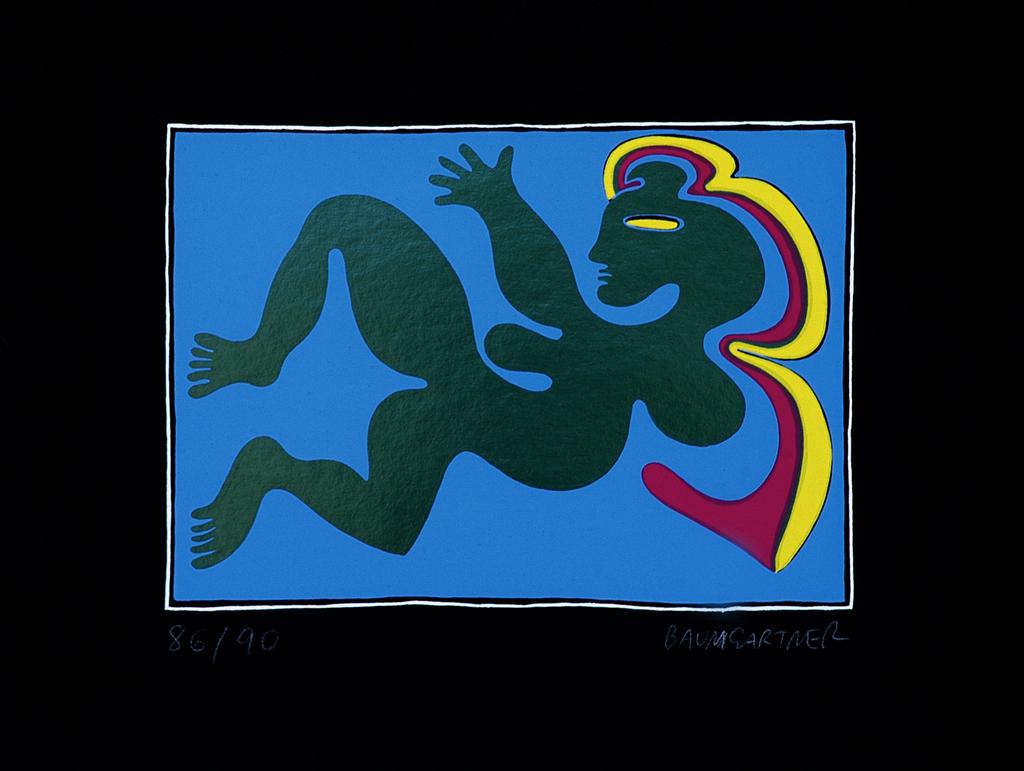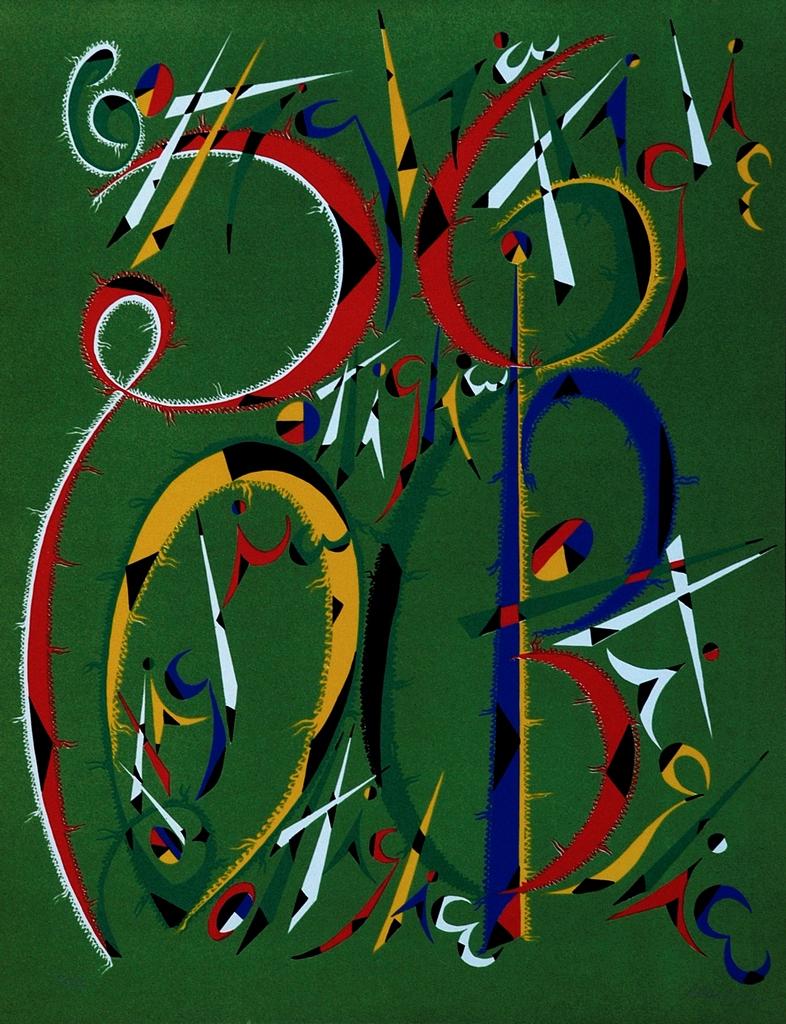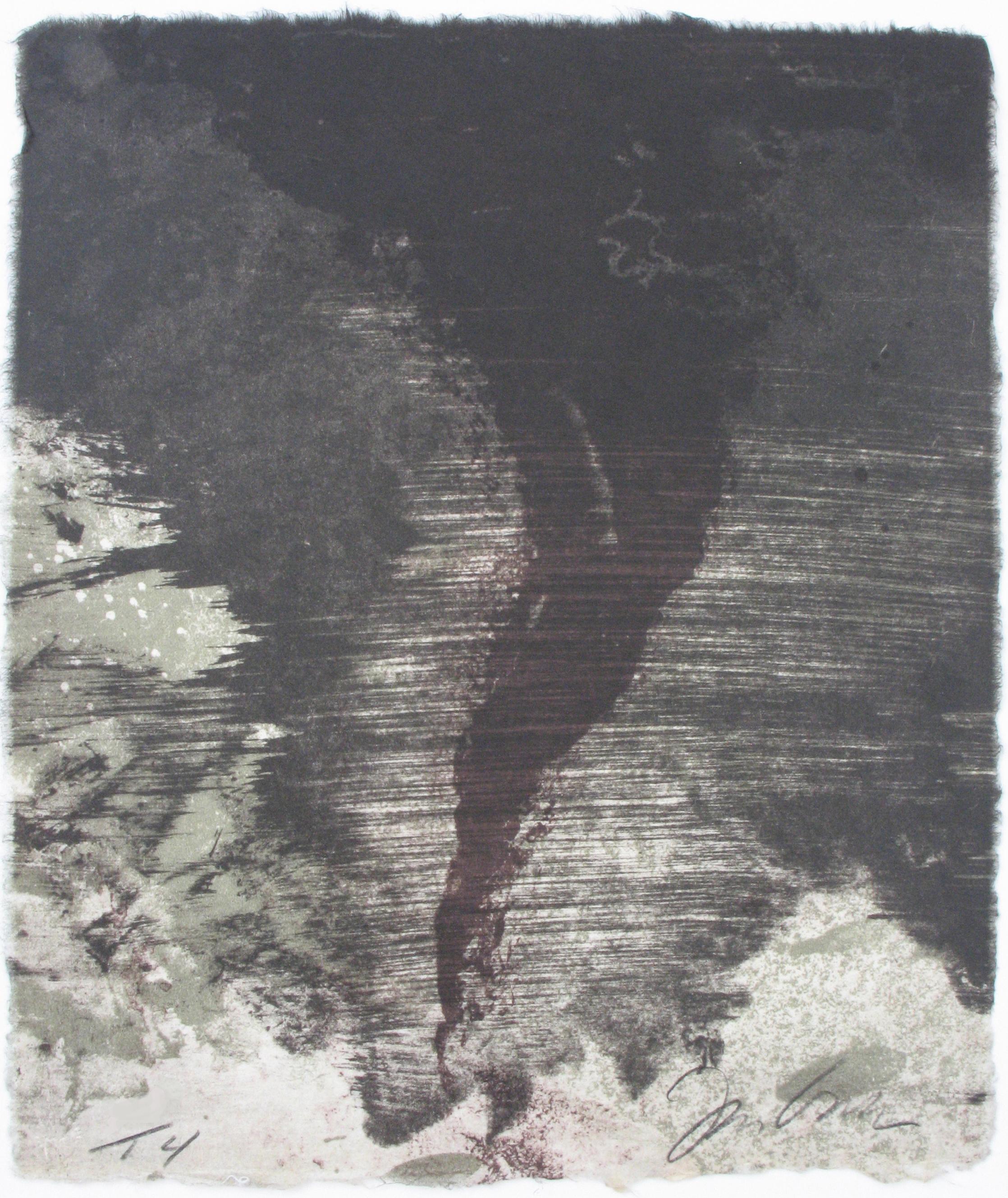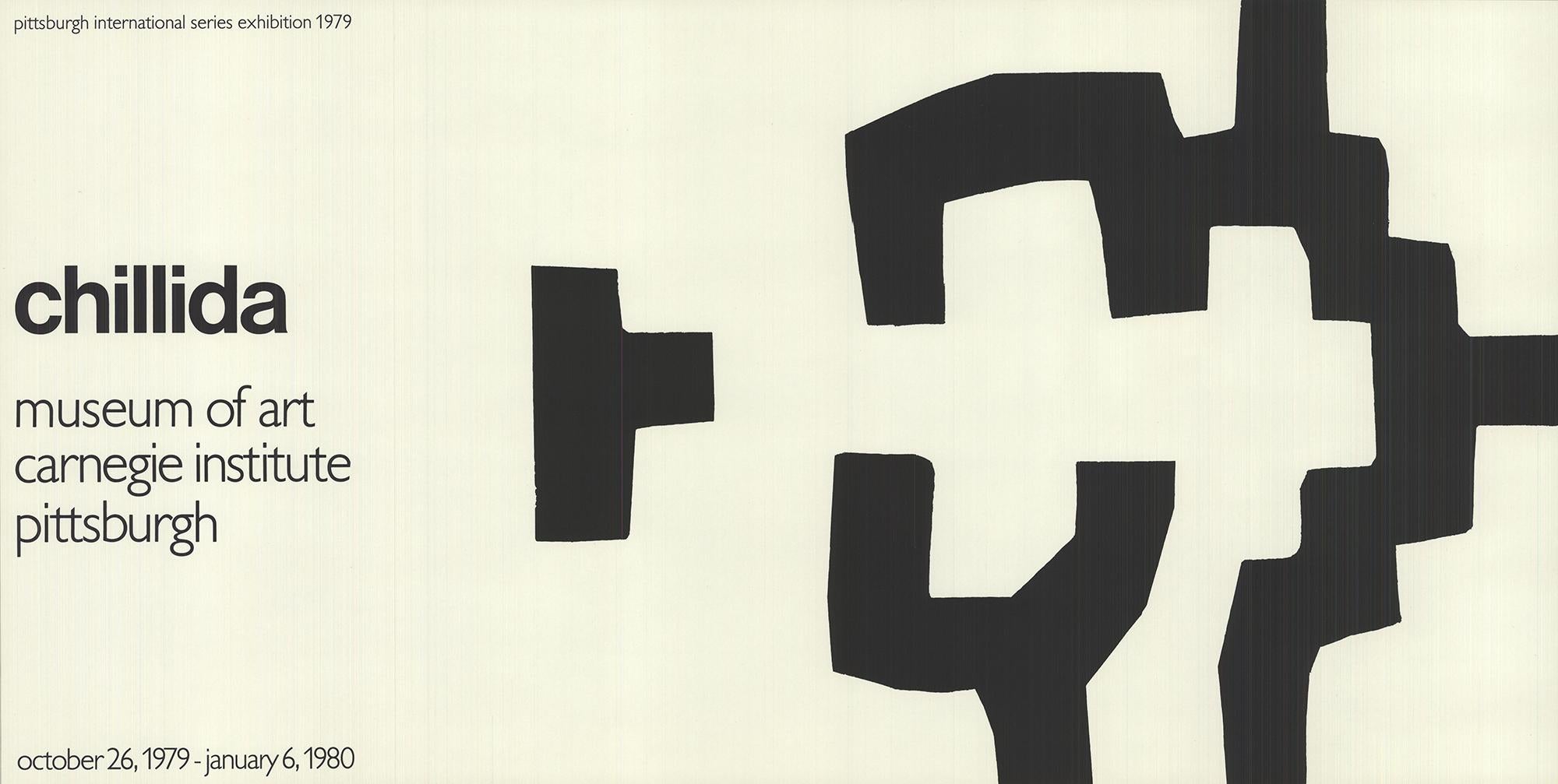Items Similar to Lance Lawlor Lithograph "Design in Black & White" Geometric Abstract
Want more images or videos?
Request additional images or videos from the seller
1 of 7
Lance LawlorLance Lawlor Lithograph "Design in Black & White" Geometric Abstract1990s
1990s
About the Item
"Design in Black & White" is a lithograph by the well-known Michigan designer Lance Lawlor. He was a Master of linear and decorative design and this print displays the talent for which he was sought after.
Lance Stephen Lawlor was born January 6, 1955, in Detroit, Michigan. He attended the University of Michigan, graduating with a BFA in 1975 from the Penny W. Stamps School of Art & Design. He was a student of world renown costume designers of the 1930s-1950s, especially Adrian Adolph Greenberg (Dinner At Eight, Grand Hotel), Orry George Kelly (Casablanca, Now, Voyager), and Edith Head (Rear Window, Vertigo). Throughout the 1980s, he was a costume designer for Ann Arbor Civic Theater (The Late Christopher Bean, The Boyfriend) and University of Michigan Gilbert & Sullivan Society. From 1986-87, Lance served as a costume technician in the University of Michigan theater department.
Lawlor enjoyed a variety of pursuits, including floral design, furniture restoration, and decorative painting, eventually settling into a life-long career as an Interior Designer. He had an unerring eye for color, fabric and proportions, and attracted both commercial and residential clients from California, Florida, Connecticut, Chicago, Mexico, Mackinac Island, and all over Michigan. He worked on diverse projects, including many professional offices, salons, Liberty Sports Club, and with the Iroquois Hotel on Mackinac Island for eighteen years.
He had the gift of using humor to direct clients, many of whom became friends, to a better design decision with such lines as, "You have two choices, and one of them is wrong." He left a lasting legacy of beautifully designed spaces and warm and welcoming homes. Lance loved opulence in contemporary and traditional style, gardens, art, beauty, Northern Michigan, and a solidly made cocktail.
Measurements for Lithograph without frame: 24 " h x 18" w. It is signed and numbered 47/80.
- Creator:Lance Lawlor (1952 - 2020)
- Creation Year:1990s
- Dimensions:Height: 39 in (99.06 cm)Width: 29 in (73.66 cm)
- Medium:
- Movement & Style:
- Period:
- Condition:
- Gallery Location:Detroit, MI
- Reference Number:1stDibs: LU128616123922
About the Seller
5.0
Vetted Seller
These experienced sellers undergo a comprehensive evaluation by our team of in-house experts.
Established in 2014
1stDibs seller since 2019
96 sales on 1stDibs
Typical response time: 4 hours
- ShippingRetrieving quote...Ships From: Detroit, MI
- Return PolicyA return for this item may be initiated within 14 days of delivery.
More From This SellerView All
- Arnold Singer "Woman on Arm of Sofa" Lithograph Linear Black & WhiteLocated in Detroit, MI“Woman on Arm of Sofa” is an extraordinary lithograph by Arnold Singer. You could say it is representative of his interests in several art styles that ar...Category
1960s Contemporary Figurative Prints
MaterialsLithograph
- Jean Dubuffet Lithograph Art Brut "I. Traces grotesques"By Jean DubuffetLocated in Detroit, MISALE ONE WEEK ONLY "I. Traces grotesques" is an Artist’s Proof Lithograph. “Proofs” are either pulled or printed, and the artist has the option to work out the color and quality issues as they come out of the process. The only real difference between the two is the restricted quantity of prints bearing the AP designation and not the quality of the print. This lithograph is signed and titled by the artist, Jean Dubuffet, which indicates his complete satisfaction with the print. It is from 1958 and a perfect example of his style, “Art Brut.” His idealistic approach to aesthetics embraced what is called “low art”, art by non-academically trained artists. It is sometimes referred to as “outsider art.” He did study briefly at the Academie Julian, Paris, but eventually followed his own aesthetics which eschewed traditional standard of beauty in favor of what he believed to be a more authentic and humanistic approach to image-making. This lithograph expresses the beauty he found in the meandering spontaneous black line. Jean Dubuffet began painting at the age of seventeen and studied briefly at the Academie Julian, Paris. He painted off and on for the next 20 years. It was not until 1942 in the midst of WWII in France that he began the work which has distinguished him as an outstanding innovator in postwar Europe. It is said of his work that “he looked to the margins of the everyday – the art of prisoners, psychics, the uneducated, and the institutionalized – to liberate his own creativity and coining the term ‘Art Brut’.” Art Brut is a French term that translates as ‘raw art’, to describe art such as graffiti or naïve art which is made outside the academic tradition of fine art. His paintings from the early forties in brightly colored oils were soon followed by works in which he employed such unorthodox materials as cement, plaster, tar and asphalt-scraped, craved and cut and drawn upon with a rudimentary, spontaneous line. Dubuffet worked in France and exhibited from the early forties on. He was included in the 1946 Pierre Matisse...Category
1950s Abstract Abstract Prints
MaterialsLithograph
- Piero Dorazio Lithograph Abstract Geometric Quadrilateral PolygonBy Piero DorazioLocated in Detroit, MIThe work is a Lithograph, not numbered, but signed and dated by the artist, Piero Dorazio. The print has an intense color field with a strong linear element being composed of quadril...Category
1970s Abstract Expressionist Abstract Prints
MaterialsLithograph
- Helen Frankenthaler What Red Lines Can Do Series, Screen PrintBy Helen FrankenthalerLocated in Detroit, MIONE WEEK ONLY SALE "Untitled" lithograph from Frakenthaler's What Red Lines Can Do Series. Signed and dated, with the numbers 55/9/75 on the lower front right. Color screen print on white arches handmade cold press paper. Helen Frankenthaler was born on December 12, 1928 in New York City, the daughter of a New York Supreme Court judge and a family of Jewish immigrants from Germany who emphasized culture and intellectual pursuits and continue to be active to this day such as through nephew, the artist and photographer Clifford...Category
1970s Abstract Expressionist Abstract Prints
MaterialsLithograph
- Roy Lichtenstein "Figures" 1978 (From Surrealist Series) Gemini G.E.L. PrintersBy Roy LichtensteinLocated in Detroit, MISALE ONE WEEK ONLY Title: Figures Portfolio: 1978 Surrealist Medium: Lithograph on Arches 88 paper Edition: 38 Sheet Size: 31 7/16" x 23 1/2" Image Size: 23 1/2" x 15 1/4" Signature: Hand signed in pencil Reference: Corlett 156 Printed by Gemini G.E.L. printers out of Los Angeles. Roy Fox Lichtenstein was an American pop artist. During the 1960s through the 90’s, along with Andy Warhol, Jasper Johns, and James Rosenquist, he became a leading figure in the new art movement. His work defined the premise of pop art through parody. Most of Lichtenstein's best-known works are relatively close, but not exact, copies of comic book panels, a subject he largely abandoned in 1965. Lichtenstein's Still Life paintings, sculptures and drawings, which span from 1972 through the early 1980s, cover a variety of motifs and themes, including the most traditional such as fruit, flowers, and vases. Inspired by the comic strip, Lichtenstein produced precise compositions that documented while they parodied, often in a tongue-in cheek manner. His work was influenced by popular advertising and the comic book style. His artwork was considered to be "disruptive". He described pop art as "not 'American' painting but actually industrial painting". His paintings were exhibited at the Leo Castelli Gallery in New York City. Wham!, and Drowning Girl Look Mickey proved to be his most influential works. His most expensive piece is Masterpiece which was sold for $165 million in January 2017. Lichtenstein received both his Bachelors and Masters at Ohio State University, Columbus, Ohio where he taught for ten years. In 1967, he moved back to upstate New York and began teaching again. It was at this time that he adopted the Abstract Expressionist style, being a late convert to this style of painting. Lichtenstein began teaching in upstate New York at the State University of New York at Oswego in 1958. About this time, he began to incorporate hidden images of cartoon characters such as Mickey Mouse and Bugs Bunny into is abstract works. In 1960, he started teaching at Rutgers University where he was heavily influenced by Allan Kaprow, who was also a teacher at the university. This environment helped reignite his interest in Proto-pop imagery. In 1961, Lichtenstein began his first pop paintings using cartoon images and techniques derived from the appearance of commercial printing. This phase would continue to 1965, and included the use of advertising imagery suggesting consumerism and homemaking. His first work to feature the large-scale use of hard-edged figures and Ben-Day dots was Look Mickey (1961), National Gallery of Art, Washington, D. C.) This piece came from a challenge from one of his sons, who pointed to a Mickey Mouse comic book and said; "I bet you can't paint as good as that, eh, Dad?" In the same year he produced six other works with recognizable characters from gum wrappers and cartoons. It was at this time that Lichtenstein began to find fame not just in America but worldwide. He moved back to New York to be at the center of the art scene in 1964 to concentrate on his painting. Lichtenstein used oil and Magna (early acrylic) paint in his best known works, such as Drowning Girl (1963), which was appropriated from the lead story in DC Comics’ Secret Hearts No. 83, drawn by Tony Abruzzo. (Drowning Girl now hangs in the Museum of Modern Art, New York.) Drowning Girl also features thick outlines, bold colors and Ben-Day dots, as if created by photographic reproduction. Of his own work Lichtenstein would say that the Abstract Expressionists "put things down on the canvas and responded to what they had done, to the color positions and sizes. My style looks completely different, but the nature of putting down lines pretty much is the same; mine just don't come out looking calligraphic, like Pollock’s or Kline’s. Rather than attempt to reproduce his subjects, Lichtenstein's work tackled the way in which the mass media portrays them. He would never take himself too seriously, however, saying: "I think my work is different from comic strips – but I wouldn't call it transformation; I don't think that whatever is meant by it is important to art.” When Lichtenstein's work was first exhibited, many art critics of the time challenged its originality. His work was harshly criticized as vulgar and empty. The title of a Life magazine article in 1964 asked, "Is He the Worst Artist in the U.S.?" Lichtenstein responded to such claims by offering responses such as the following: "The closer my work is to the original, the more threatening and critical the content. However, my work is entirely transformed in that my purpose and perception are entirely different. I think my paintings are critically transformed, but it would be difficult to prove it by any rational line of argument.” In 1969, Lichtenstein was commissioned by Gunter Sachs to create Composition and Leda and the Swan, for the collector's Pop Art bedroom suite at the Palace Hotel in St. Moritz. In the late 1970s and during the 1980s, Lichtenstein received major commissions for works in public places: the sculptures Lamp (1978) in St. Mary's, Georgia; Mermaid (1979) in Miami Beach; the 26 feet tall Brushstrokes in Flight (1984, moved in 1998) at John Glenn Columbus International Airport; the five-storey high Mural with Blue Brushstroke (1984–85) at the Equitable Center, New York and El Cap de Barcelona (1992) in Barcelona. In 1994, Lichtenstein created the 53-foot-long, enamel-on-metal Times Square Mural in Times Square subway station. In 1977, he was commissioned by BMW to paint a Group 5 Racing Version of the BMW 320i for the third installment in the BMW Art Car Project. The DreamWorks Records logo was his last completed project. "I'm not in the business of doing anything like that (a corporate logo) and don't intend to do it again," allows Lichtenstein. "But I know Mo Ostin and David Geffen and it seemed interesting. In 1996 the The National Gallery of Art in Washington, D.C. became the largest single repository of the artist's work when Lichtenstein donated 154 prints and 2 books. The Art Institute of Chicago has several important works by Lichtenstein in its permanent collection, including Brushstroke with Spatter (1966) and Mirror No. 3 (Six Panels) (1971). The personal holdings of Lichtenstein's widow, Dorothy Lichtenstein, and of the Roy Lichtenstein Foundation number in the hundreds. In Europe, the Museum Ludwig in Cologne has one of the most comprehensive Lichtenstein holdings with Takka Takka (1962), Nurse (1964), Compositions I (1964), besides the Frankfurt Museum fur Modern Kunst with We Rose Up slowly (1964), and Yellow and Green Brushstrokes...Category
1970s Pop Art Abstract Prints
MaterialsLithograph
- James Hansen "Untitled III", Abstract Aquatint Etching Lithograph, Signed & No.Located in Detroit, MIONE WEEK ONLY SALE AT 40% "Untitled III" is a work that displays James Hansen's intense colors and shapes of his abstract and surrealist style. This print made with etching and aquatints with hand-coloring on Arches paper pops with the illusion of three dimensions set against a muted background of esoteric shapes and symbols. The print is 32-3/4 x 25-3/4 inches and is signed and numbered from an edition of 30 by the artist. Numbered edition may not necessarily be number 20 as there are multiple prints in the possession of Collected Detroit. James Hansen was born in 1951 in New Haven, Connecticut and spent most of his artistic career in Provincetown, Massachusetts where he befriended and worked with Paul Bowen...Category
1990s Abstract Prints
MaterialsEtching, Aquatint, Lithograph
You May Also Like
- Blue Face from the Brushstroke Figures SeriesBy Roy LichtensteinLocated in Miami, FLLithograph, waxtype woodcut and screenprint on 638-g/m cold-pressed Saunders Waterford Paper. From the "Brushstroke Figures" series, 1989. Hand signed rf Lichtenstein, dated ('89) a...Category
1980s Contemporary Abstract Prints
MaterialsLithograph, Screen, Woodcut
- Woman in Blue - Lithograph by Fritz Baumgartner - 1970caBy Fritz BaumgartnerLocated in Roma, ITHand Signed. Edition of 90 pieces plus some artist's proofs. Excellent condition.Category
1970s Contemporary Abstract Prints
MaterialsLithograph
- Letter B - Lithograph by Rafael Alberti - 1972By Rafael AlbertiLocated in Roma, ITHand Signed. Edition of 119 pieces (99 Arabic Numbers and XX Roman Numbers).Category
1970s Contemporary Abstract Prints
MaterialsLithograph
- Tall Tree and the Eye at the Royal Academy poster (hand signed by Anish Kapoor)By Anish KapoorLocated in New York, NYAnish Kapoor Tall Tree and the Eye at the Royal Academy (hand signed by Anish Kapoor), 2009 Off-set lithograph poster (hand signed by Anish Kapoor) Signed in black marker lower right...Category
Early 2000s Contemporary Abstract Prints
MaterialsPermanent Marker, Lithograph, Offset
- Terrible Twister (State II)By Joe GoodeLocated in Calabasas, CAArtist: Joe Goode Title: Terrible Twister (State II) Year: 1991 Medium: Lithograph on Japanese handmade Kozo natural paper (unbleached Uwazen and Kozo Misumi) Sheet: 11 1/4 × 9 1/2 i...Category
1990s Contemporary Abstract Prints
MaterialsLithograph
- 1980 After Eduardo Chillida 'Museum of Art Carnegie Institute' LithographBy Eduardo ChillidaLocated in Brooklyn, NYPoster for a Chillida exhibit at the Museum of Art Carnegie Institute in Pittsburgh, 1980.Category
1980s Contemporary Abstract Prints
MaterialsLithograph
Recently Viewed
View AllMore Ways To Browse
Retro Sign Design
Contemporary Vintage Interior Design
Contemporary Retro Interior Design
Welcome Home
Design Legacy
Grand Hotels
Used Furniture In Florida
Vintage Window Designs
Floral Fabric Print
Vintage Florida Sign
Vintage Florida Signs
Vintage Abstract Fabric
Vintage Floral Fabric Prints
Vintage Floral Print Fabric
Abstract Floral Print
Retro Welcome Sign
Retro Floral Print Fabric
Used Furniture In Detroit





